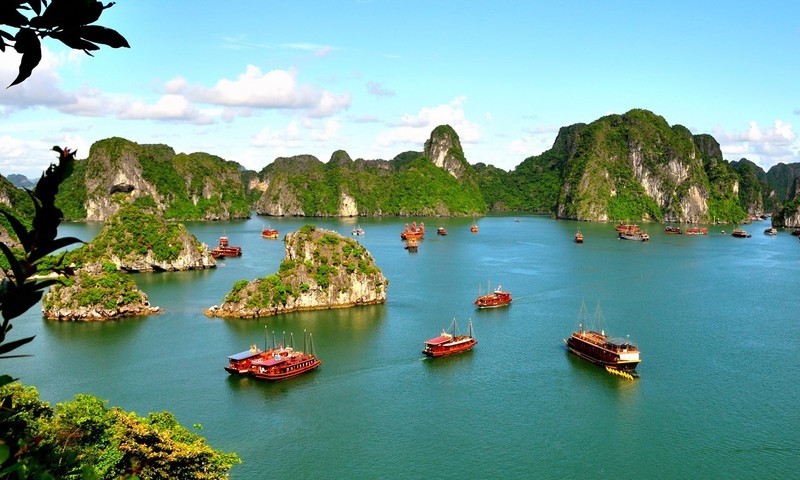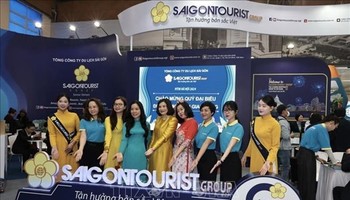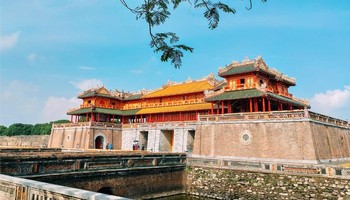Light a lantern in Hoi An
 |
Lanterns in Hoi An (Dreamstime)
Every Tet (Vietnamese New Year), Hoi An is transformed into a kaleidoscope of colour and light for its Lantern Festival. The celebration lasts for seven days, with the road from Hoi An Bridge to the Hoai River Square adorned with thousands of colourful lanterns.
Over 50 workshops take part in the event, each trying to create the prettiest lantern. The colours are bright and the designs are strictly traditional.
The heart of the festivities is in the old town, between the Japanese Covered Bridge and the Cau An Hoi Bridge. It’s crowded, chaotic and festive, with spontaneous singing and food stalls at every turn. It is as much a celebration for locals as it is for visitors.
The most breathtaking sight is thousands of lanterns floating on the river; hire a sampan boat to get a closer look. For a small sum, you can buy a lantern and set it afloat too.
Don’t worry if you can’t make it to Hoi An for New Year: smaller lantern festivals are held every full moon.
Visit Ha Long Bay and its equally spectacular neighbour
With 1,600 limestone towers rising from its turquoise waters, Ha Long Bay is rightly considered one of Vietnam’s most beautiful spots. As a result, it’s on every visitor's list – and hundreds of boats offer cruise trips every day. The bay is huge, but it can still feel crowded.
Bai Tu Long Bay, just a few miles away, offers the same jaw-dropping scenery but sees only a fraction of the visitors. Here, you can explore uncrowded caves and tiny beaches, and feast on super-fresh succulent seafood.
Boat trips to Bai Tu Long Bay leave from the crowded dock at Halong City, just like the ones to Halong Bay. But you'll head off in the opposite direction, to where the islands are a little less taller and a little more spread out – but, according to locals, are just like what those in Ha Long Bay used to be like.
Hike through Cat Ba Island
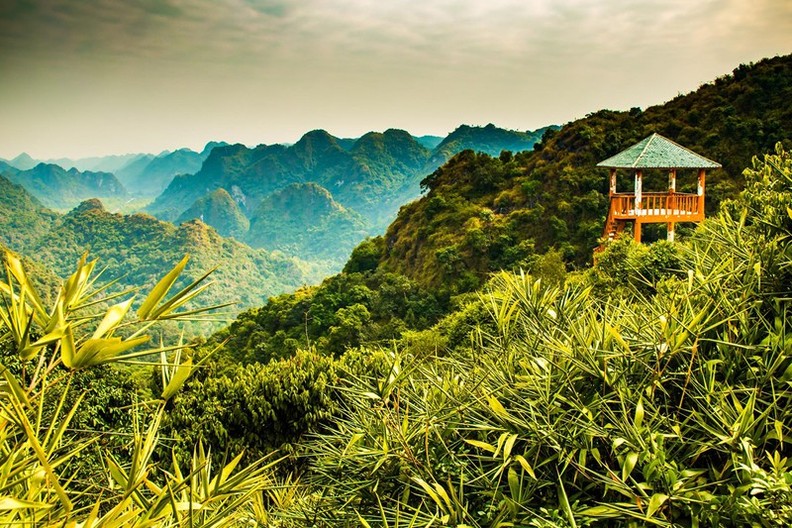 |
Ngu Lam Peak, the end point of a popular Cat Ba hiking trail (Shutterstock)
You can't go wrong with a visit to Cat Ba Island. The views are spectacular, and the nearby Lan Ha Bay is a brilliant Ha Long alternative - another breathtakingly beautiful bay, without the tourist masses.
It's USP? The hiking, says Wanderlust's Rosie Fitzgerald. Enjoy trekking through the pristine rainforest that makes up the vast national park. The Lookout Tower Trail is a popular and fairly easy hike. Walk upwards for around an hour, until you come out at a rusted shelter, from where you can appreciate just how untouched Cat Ba really is.
If you want more, venture up a little further to reach the stunning Ngu Lam Peak. It's worth the effort to look out over the jagged, green mountains that blur out into the distance.
For more of a challenge, book a guide and embark on the Cang Viet Hai Trail – an 18km, undulating trail that requires a good fitness level. Prepare to climb steep, slippery paths and scramble over thick knots of tree routes that block the path.
Cruise the Mekong Delta
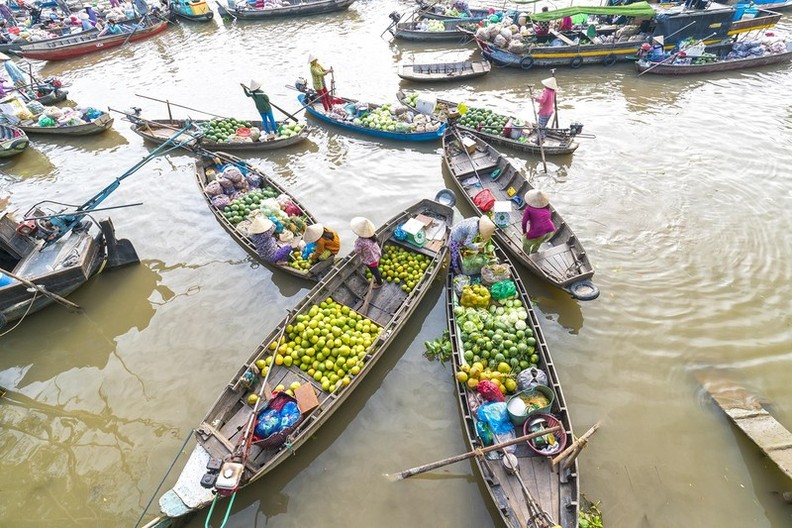 |
The Mekong River's famous floating markets (Shutterstock)
After travelling over 4,000km from the Tibetan Himalaya, the Mekong hits Vietnam and slows down to a more languid pace. With islands, rice paddies, stilted villages and a way of life that hasn’t changed for centuries, it’s as if the river wants to take it easy and soak up the view.
Hitch a ride with a cargo boat and you can do exactly that. Simply find a shady spot to hitch your hammock and gaze at faraway riverbanks as your boat, weighed down with fruit and rice sacks, ploughs the treacly brown flow.
Or, take one of the many commercial cruises that ply parts of the river. The cruise from Cai Be to Can Tho is a great way to experience a night on the river. As you travel southwards along the Mang Thit River linking the Tien Giang and Bassac systems, the channel becomes so narrow that you can peer into the riverbank’s rickety stilted houses.
Drop into the world’s largest cave in Phong Nha National Park
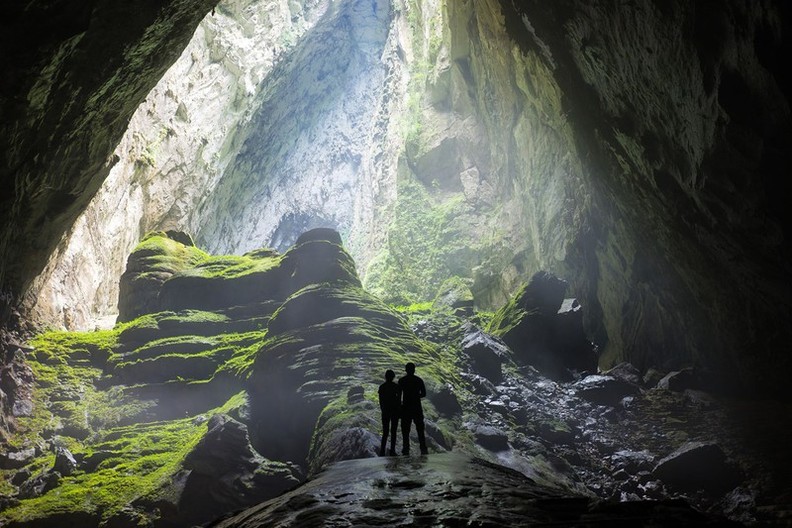 |
Son Doong Cave (Shutterstock)
Quang Binh province is a wild region of barely penetrable jungle in Vietnam’s skinny middle, close to the border with Laos. The area is riddled with hundreds of deep caves, including one of the largest in the world – Hang Son Doong. It contains a cavern so tall that a skyscraper could fit inside it.
The small town of Phong Nha is the epicentre for the area’s caving adventures, its eponymous cave another UNESCO-listed wonder well worth exploring. Here, you can hire both the guides and the gear you’ll need to descend into the caves.
If going underground doesn’t appeal, the area is also famous for trekking. The surrounding jungle is peppered with stunning waterfalls and an active (and noisy) population of monkeys and flying foxes.
Visit the coffee-making heartland, Buon Ma Thuot
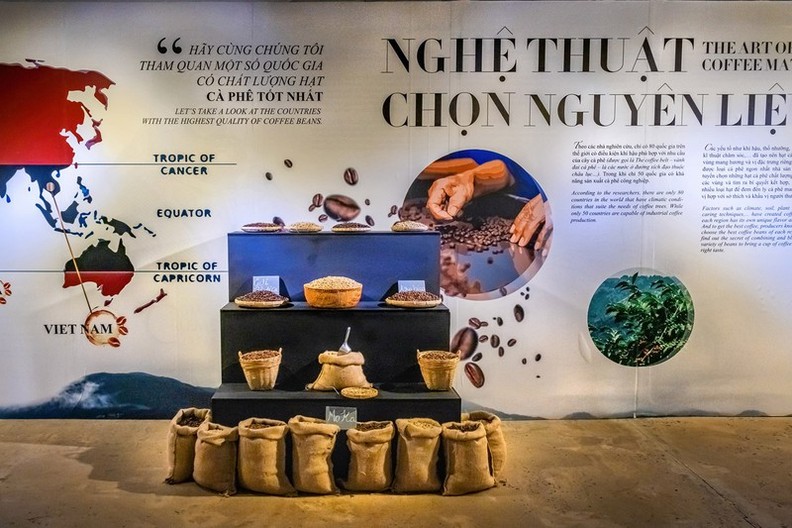 |
The World Coffee Museum in Buon Ma Thuot (Shutterstock)
Buon Ma Thuot is the regional capital of the central highlands of Vietnam, a gorgeous area of thundering waterfalls and the traditional villages of the local Ede people. Look out for stilted structures reached by a ladder and marked by carved breasts. In this fiercely matriarchal area, they can only be used by the women of the house.
Buon Ma Thuot is also the heart of Vietnam’s thriving coffee industry. The Trung Nguyen coffee company is the big player here, and there’s not a corner of paddy field or industrial zone in the area that doesn’t bear their logo.
In the city itself, there are plenty of coffee-related attractions. Visitors can learn about the country's and the world's coffee industries in the World Coffee Museum year-round.
You'll probably come across 'weasel' coffee during your visit, also known as kopi luwak or civet coffee, which aficionados claim is the best in the world. While many believe its unique taste is excellent, it's worth knowing that recent investigations have found unethical animal welfare practices on coffee farms across the region.
Top tip: "If you can’t visit the coffee heartland, be sure to taste a Vietnamese egg coffee while you’re in Hanoi," says Wanderlust's executive director Jackie Scully. "I loved the Note coffee house right by the main lake in the capital. Covered in uplifting post-its from travellers from across the world, it was more than just a caffeine boost."
Search for Vietnam’s best pho in Hanoi
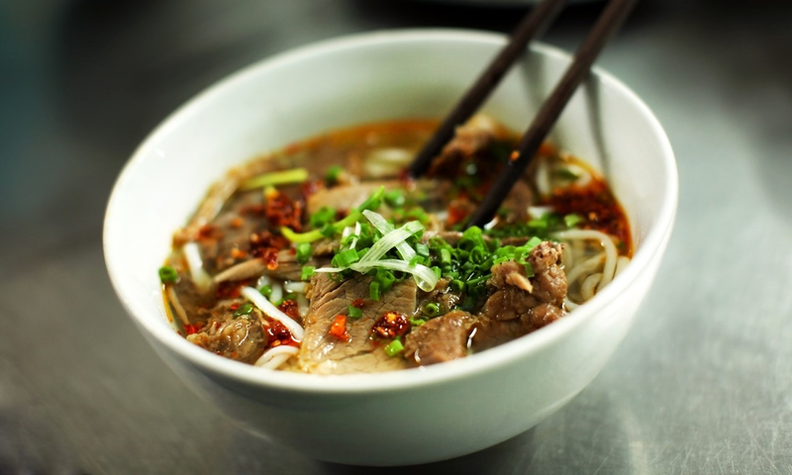
Vietnamese pho (Dreamstime)
Pho is a Vietnamese staple – a quick, tasty meal made from four simple ingredients: clear stock, boiled beef, rice noodles and herbs or green onions. In Vietnam, you’ll find it served on street corners and in upscale restaurants, as well as in every family home.
Hanoi has gained a reputation as the pho capital of Vietnam. Every restaurant here boasts a secret recipe. Take your time searching for the best – that's part of the fun! But if you want our advice? Head to Lo Duc in the French Quarter and sit yourself down at Pho Thin.
This unassuming pho house, with wooden benches and laminated tables, does things a little differently – such as stir-frying the beef in garlic before adding it to the soup. Local foodies insist it gives the pho an unusual smokiness, one you won't found in other restaurants. Pho Thin is always packed, but once you're inside, you'll know it was worth the wait.
Go to church, Vietnamese-style
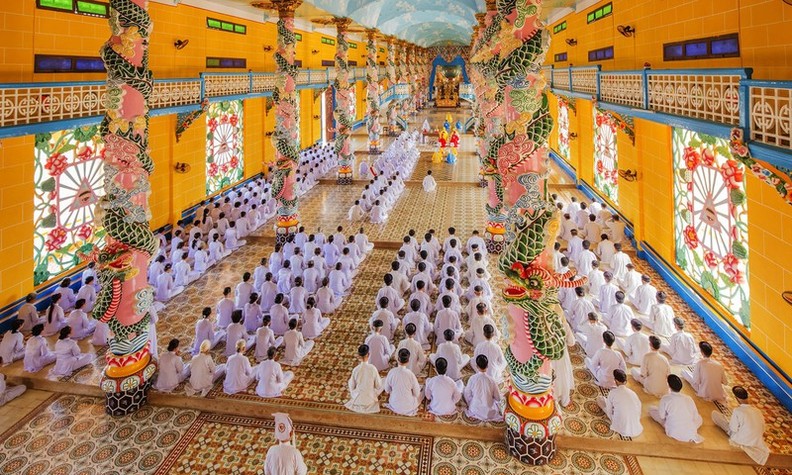
Worshippers inside Cao Dai temple (Shutterstock)
Tây Ninh, a busy town on the Mekong Delta, is perhaps the most unlikely holy city on the planet. Here, amongst the busy streets stalls and noisy traffic sits Cao Dai Temple, the Holy See of the Cao Dai religion.
From a distance, the temple’s towers resemble a parochial church. But closer inspection reveals an eclectic facade with sword-brandishing gods, swastikas, a Communist red star and an Orwellian all-seeing eye.
Prayers are conducted four times a day, with the one at noon popular with day-trippers from Ho Chi Minh City.
Cycle around Hue
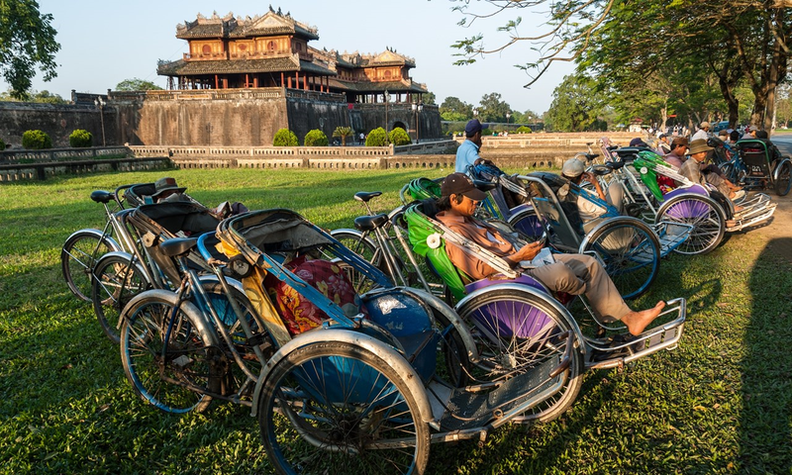
Cyclo drivers in Hue (Dreamstime)
Halfway between Hanoi and Ho Chi Minh City, Hue marked the divide between the north and the south during the Vietnam War. Set upon the pretty Perfume River, it has always played an important part in Vietnamese history and is dotted with important historical sites.
It is also a great place to cycle. Set off in the cool of the morning and head three kilometres out of town to the Tiger Fighting arena. It was Vietnam’s version of the Colosseum, a place where elephants and tigers would fight to honour the strength of the monarchy. Next, head to Tu Duc Tomb before reaching Vong Canh Hill – the best spot for panoramic views of the Perfume River.
From Vong Canh Hill, it’s downhill to one of Hue's most atmospheric pagodas, Tu Hieu, which is located in a tranquil and picturesque pine forest. Swing by the tomb of Minh Mang, the second emperor of the Nguyen dynasty, before heading back to town.
Upon reaching the walled fortress of the Imperial Citadel, you have two choices: take a leisurely cycle through the UNESCO World Heritage Site and Vietnam's version of the Forbidden City, or enjoy a relaxing drink next to the Perfume River.
Sound too much like hard work? You find any number of cyclo drivers nearby to do all the effort for you.
Find romance at Sapa’s love market

H'mong women at a market in Sapa (Dreamstime)
The market town of Sapa, in Vietnam’s mountainous north, first became popular as a French hill station in the 1930s. Set on a 1,650m-high mountain ridge, the town boasts fabulous views of the Hoang Lien Mountains and a colourful market attended by hill tribes from the surrounding countryside every Saturday.
The town has become increasingly popular with tourists, but there are still old traditions hidden in its secret corners. One of those is the Love Market, where Dao (and H’mong) men and women come from miles around to sing songs of love to each other. It was originally held at the end of trading at the Saturday markets, but over-zealous visitors taking intrusive photos has driven the tradition underground.
The Love Market still exists, but now it takes place in secret locations in the dead of night, well away from the gaze of visitors. But if your interest is genuine and you can find a local willing to trust you, the romance can still be found.
Sail past the Tam Coc rice fields
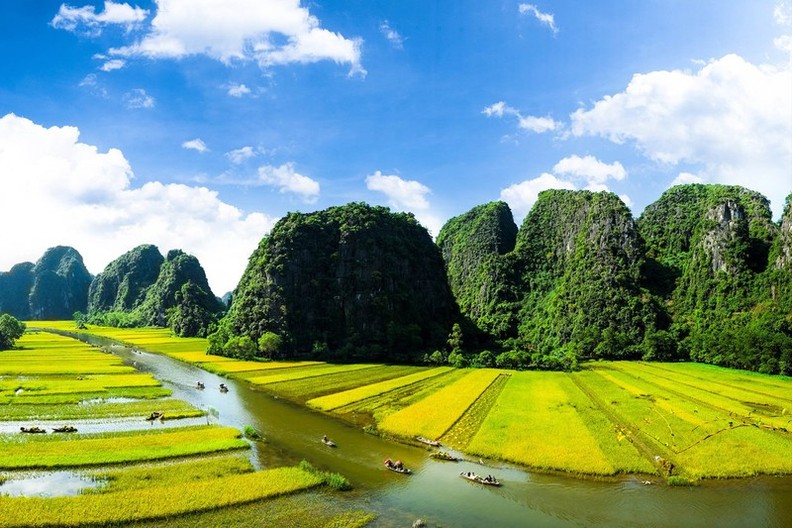
The Ngo Dong River and rice fields in Ninh Binh (Shutterstock)
In 2014, the Trang An Scenic Landscape Complex in the northern Vietnam's Ninh Binh province was inscribed as a UNESCO World Heritage Site. No wonder to anyone who has seen it with their own eyes: dramatic limestone karsts and sweeping, deep green valleys, often with boats floating along the Red River Delta.
The village of Tam Coc-Bich Dong (often referred to simple as 'Tam Coc') falls under this complex, and its famous rice paddies enjoy the same UNESCO-listed status. Undoubtedly, the best way to experience them to take a slow, languorous boat ride along the Ngo Dong River, admiring the otherworldly view as you go.
Getting to Tam Coc is easier than ever. Admittedly, the area has become more popular with visitors in recent years - for good reason. Buses and trains from Hanoi to Ninh Binh take about three hours, while organised day tours and two-day trips are available, if you'd prefer to take the pressure off planning your excursion.
However you get there, you'll want to spend at least a day here, if not longer, advises Wanderlust's Jackie Scully. "Head to Hang Mua while you're in the Ninh Binh province and you'll be rewarded for climbing the 486 stone steps with an amazing viewpoint. Go early to avoid the heat."
Spot rare primates in Cat Tien National Park

Primates hanging out in Cat Tien National Park, Vietnam (Shutterstock)
Cat Tien National Park in southern Vietnam is a wildlife lover's dream: a 720 sq km biosphere reserve, comprised of botanical gardens and lowland forest, offering an abundance of rare creatures and birdlife, all kept safe and sheltered in a number of sanctuaries and rescue centres.
Golden-cheeked gibbons, silvered langurs and native pygmy lorsies are among the rare primates to be spotted in Dao Tien Endangered Primate Species Centre. Cat Tien Bear Sanctuary homes tens of sun bears.
Asian elephants and clouded leopards are also among the rare sightings wildlife watchers have recorded in Cat Tien. Birders will have their hands full, too, with Asian barred owlet, blue-rumped and bar-bellied pittas, and orange-necked partridge sightings - just to name a few - very possible.
Some of the park's animal residents come alive when the sky goes dark, so if you're hoping for a unique wildlife encounter in Vietnam, consider staying the night in one of Cat Tien's homestays or hotel accommodation, and embark on a nighttime drive.
An added bonus? Those on a day trip will be zipping back to Ho Chi Minh City by then, which is approximately three hours and 30 minutes away by car, so you'll have more of the park to yourself.
Marvel at Ban Gioc Waterfall
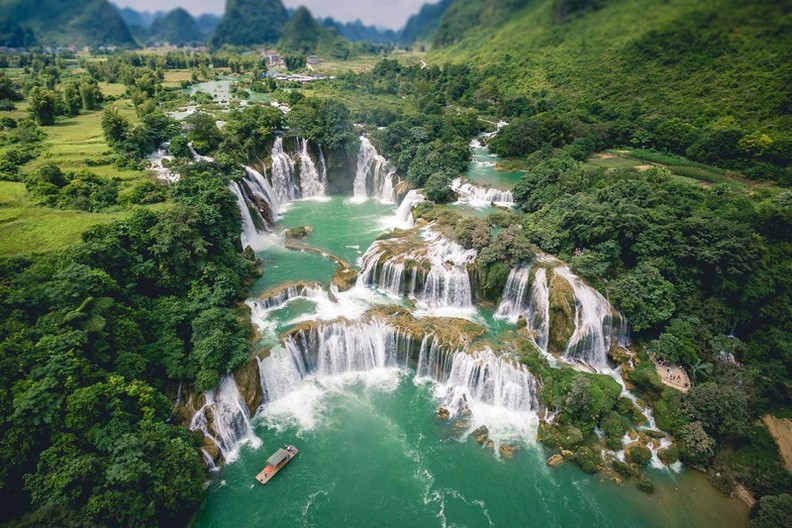
The magnificent Ban Gioc Waterfall (Shutterstock)
Ban Gioc is the name of not one, but two colliding waterfalls along the Quay Son River - an iconic way to mark the Vietnam-China border, in the Trung Khanh District, Cao Bang on Vietnam's side, and Daxin County, Guangxi on China's.
Here, you'll be taking in one of South-East Asia's most breathtaking natural sights. Its sheer size (70m tall, and 208m wide) is marvel-worthy in itself, but the way the falls cascade down its rocky, limestone face is most eyecatching. If you're up for a climb, it is possible to trek up to the 'falls high points, as long as you're equipped with the appropriate walking gear.
Once you've soaked up the immense views, there's plenty to see and do in the Cao Bang region, which sits high up in the mountainous north-east of the country. Caves to explore, local homestays to experience, and more majestic waterfalls beckon.
Admire the Golden Hands Bridge in Da Nang

The Golden Hands Bridge in the Ba Na Hills, Da Nang (Shutterstock)
Have you ever seen a bridge quite like this one? The Golden Bridge (or Golden Hands Bridge, or Giant Hands Bridge) in the Da Nang province is one of a kind.
Pedestrians can stroll across the 150m-long pathway, high above the gorgeous greenery of the seemingly-endless Ba Na Hills, and feel like they're being held in the sky by two humongous, God-like stone hands. As it happens, the stone hands are not held up by God himself, but by a sturdy steel frame and fibreglass.
The reality-warping structure was created to attract more visitors to the Da Nang region, and surely no-one can refute its social media success. There are well over 108,000 images of the bridge on the #GoldenBridge hashtag alone.
If you went to Vietnam and you didn't post a picture of the Golden Hands Bridge on your Instagram page, did your trip even happen at all?!
Embrace tranquility on Phu Quoc Island

A peaceful beach on Phu Quoc Island (Shutterstock)
Off the coast of Cambodia lies the idyllic Vietnamese island of Phu Quoc: a haven for travellers hoping to get away from the hustle and bustle of Vietnam's cities.
There's no shortage of things to see and do on Phu Quoc. Wildlife lovers can head to Vinpearl Safari Care and Conservation Park, to meet, elephants, white Bengal tigers, macaques and silver langurs, among others. Head out into nature, with a hike through the dense forests of Phu Quoc National Park, and admiring the gentle trickle of Suoi Tranh Waterfall.
Once you're all walked out, ride in the incredibly long cable car to Hon Thom Nature Park, or sit back and relax on the pristine white sands of Sao Beach, Ong Lang or remote Khem Beach. Surrounded by palm trees and forest, you'll feel like you're sitting on the edge of paradise.
Live with the locals in Mai Chau

A local in the Mai Chau Valley village of Lac (Shutterstock)
Go beyond the tourist trail to the rural north-western province of Hoa Binh. Here, you'll have the opportunity to explore the Mai Chau Valley, enclosed in mountains and skirted by rice fields. A 'hidden gem', if we ever saw one.
To get a small sense of everyday life in this part of the country, stay with a local, White Tai family in a homestay. Your best bet is one of two villages: Lac or Poom Coong. Whichever you choose, you'll be waking up to the site of rice paddies and the unbelievably-green Vietnamese countryside each morning. The Vietnamese Tourist Board highly recommends choosing your homestay near Hieu, for its idyllic scenery.
Once you're settled, it's time to appreciate the White Tai community's way of life. Cycle through Mai Chau on a rented bike, or pop to the markets to purchase exquisitely-bright, locally-woven textiles. If you can take your eyes off your village's natural wonders, a day trip to the glistening, under-appreciated Hoa Binh Lake makes for an excellent trek.
